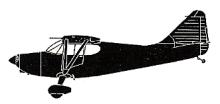
ASN Wikibase Occurrence # 355272
This information is added by users of ASN. Neither ASN nor the Flight Safety Foundation are responsible for the completeness or correctness of this information.
If you feel this information is incomplete or incorrect, you can submit corrected information.
| Date: | Thursday 11 September 1997 |
| Time: | 10:16 LT |
| Type: |  Stinson 108-3 |
| Owner/operator: | Private |
| Registration: | N800C |
| MSN: | 108-3800 |
| Total airframe hrs: | 1400 hours |
| Engine model: | Franklin 6A4165 |
| Fatalities: | Fatalities: 0 / Occupants: 2 |
| Aircraft damage: | Substantial |
| Category: | Accident |
| Location: | Horseshoe Bend, AR -
 United States of America United States of America
|
| Phase: | Initial climb |
| Nature: | Private |
| Departure airport: | |
| Westosha, WI (WI10) | |
| Investigating agency: | NTSB |
| Confidence Rating: |
After refueling an empty right fuel tank, the airplane commenced a takeoff roll, and about 400 feet down the runway, the engine 'quit', and the takeoff was aborted. Afterwards, the pilot made several engine run ups and high speed taxis to diagnose the problem. With no problems detected, he attempted another takeoff, and climbing through 75 feet AGL the 'engine lost power' again. The pilot made a 'hard left turn' to avoid electrical wires, trees, and houses. The airplane then impacted down sloping terrain. Fuel samples were found to be clear and free of contaminants. After the accident, the pilot said that it was common to find mud wasp nests throughout the airframe, and that the right fuel tank had been empty for 3-4 weeks. He stated that he thinks that the fuel vent was blocked by a mud wasp nest. This would result in a vacuum effect because of the unoccupied space between the fuel and top of the tank. The vacuum effect would prevent fuel from entering the fuel lines and result in fuel starvation to the engine.
Probable Cause: Fuel starvation due to partially blocked fuel vents. Factors were: the pilot's inadequate preflight inspection of the airplane; the pilot's improper decision to continue operation of the airplane with known deficiencies; and the lack of suitable terrain for the forced landing.
Accident investigation:
 |
|
Sources:
NTSB FTW97LA344
Location
Revision history:
| Date/time | Contributor | Updates |
|---|---|---|
| 12-Mar-2024 10:08 | ASN Update Bot | Added |
Corrections or additions? ... Edit this accident description
The Aviation Safety Network is an exclusive service provided by:


 ©2024 Flight Safety Foundation
©2024 Flight Safety Foundation